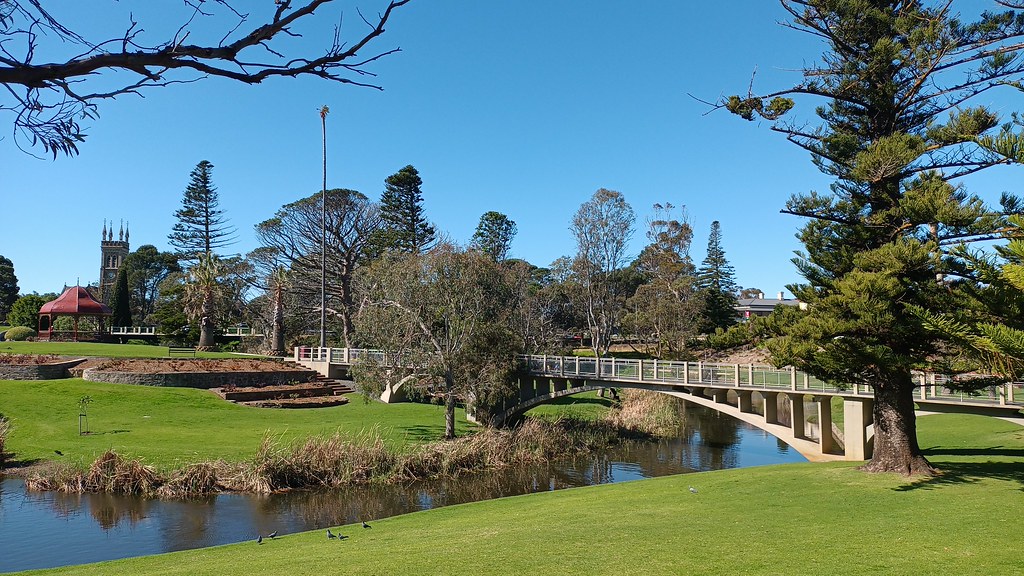THE plains around the Angas River, at the foot of the eastern side of the South Mt Lofty Ranges, were settled soon after the colony of South Australia was established. Dr John Rankine was the first to take up land there, one of 105 Scottish immigrants who arrived at Holdfast Bay, near Adelaide, on the Fairfield in May 1839. Within a few months, he went to look for farming and grazing land, and he, his wife, five children, and his brothers William and James settled in the Strathalbyn district.
They were soon joined by many of their fellow passengers from the Fairfield.
The Rankine family was prominent during the town's early development, which apparently was named from the Gaelic word 'strath', a valley, and Albyn, a corruption of Albion, an ancient name for Great Britain. William Rankine and another settler, Colonel James Dawson, were given grants under a special survey of the district in 1841 and became trustees for the land that later formed the township. The Rankines built substantial homesteads on large estates and the first church services were held in their homes. The devout pioneers laid out their town with foresight by reserving parkland and common and they also set aside an adjacent site for a church.

The town's first hotel was completed before the church. It was run by Donald Gollan, who also played an important part in the establishment of a regular mail run to Adelaide. He announced 'to his friends and the public generally that he has commenced running a spring cart carrying Her Majesty's mails'. Gollan also built the Angas flour mill, which still stands, and with William Colman and Richard Hooper, was responsible for a bridge across the Angas River. This was quaintly named the Gol-Col-Hoop Bridge - after the three men.
The township of Strathalbyn grew slowly until about 1860, although the surrounding district was becoming more and more densely settled. A survey in 1855 recorded only six cottages in the central town area. But during the 1860s, many fine civic and commercial buildings were erected, and most of them still grace the town. Strathalbyn, by then, was served by two mail coaches a day to Adelaide and was on the coach route to Melbourne. The anxiety of travellers led to agitation for a police station. This was completed in 1858, a courthouse followed in 1865, and the town achieved municipal status in 1868.

Prince Alfred, the Duke of Edinburgh, visited in 1869. He was escorted by local cavalry through triumphal arches to a banquet at the Terminus Hotel.
While he dined with the local dignitaries, other townspeople feasted at the riverbank. Their consumption included a roasted ox and 300 loaves of bread.

 |
| Victoria Hotel, Strathalbyn, late 19th century and today (above) |
Throughout the 1860s and 1870s, Strathalbyn consolidated its role as a rural service centre and made steady, orderly progress. In 1871, it had 888 people. Strathalbyn was never a mining town. It had a copper mine and a few gold mines at various times, but none was particularly successful.

The winding Angas River and its tributaries give Strathalbyn pleasantly informal street patterns and a character almost unique among country towns mainly laid out in severe grids. With about 1500 people, Strathalbyn remains a small but important centre of a highly productive rural district.
Text source: Readers Digest Book of Historic Australian Towns 1982
Photographs as credited:
RELATED STORY: Strokin' Strath - a day trip to Strathalbyn




